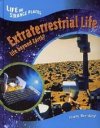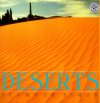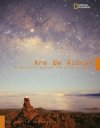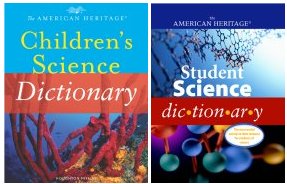Searching for Alien Life Additional Information
To follow Zoë’s exploits in Chile and learn more about this roving robot, go to www.frc.ri.cmu.edu/atacama/(Carnegie Mellon University).
You can learn more about NASA astrobiology research at astrobiology.arc.nasa.gov/ and nai.arc.nasa.gov/ (NASA Ames Research Center).
You can learn more about the Atacama Desert at www.musc.edu/cando/geocam/atacama/atacama.html (CAN DO Project) and www.extremescience.com/DriestPlace.htm(Extreme Science).
McDonagh, Sorcha. 2004. Roving the Red Planet. Science News for Kids (Jan. 28). Available at http://www.sciencenewsforkids.org/2004/01/roving-the-red-planet-2/.
Sohn, Emily. 2004. Ringing Saturn. Science News for Kids (July 28). Available at http://www.sciencenewsforkids.org/2004/07/ringing-saturn-2/.
______. 2004. Robots on a rocky road. Science News for Kids (April 21). Available at http://www.sciencenewsforkids.org/2004/04/robots-on-a-rocky-road-2/.
______. 2004. Destination Mars. Science News for Kids (March 17). Available at http://www.sciencenewsforkids.org/2004/03/destination-mars-2/.
______. 2004. Rover makes splash on Mars. Science News for Kids (March 10). Available at http://www.sciencenewsforkids.org/2004/03/rover-makes-splash-on-mars-2/.
Books recommended by SearchIt!Science:
 |
Extraterrestrial Life: Life Beyond Earth — Harry Breidahl
Published by Chelsea House, 2001.
For centuries, humans have speculated about life beyond earth. However, this book provides an introduction to a science that is quite new: astrobiology, which investigates the possibilities of life on the planets, comets, and moons of our solar system and beyond. Also, astrobiologists study our Earth’s own extreme environments to find out more about what life beyond earth may be like. This book’s colorful double-page spreads describe looking for life on Mars, how spacecraft have sampled Martian soil, the possibility of life on Europa, and the signs of early life on asteroids and comets. Space technology and the ways scientists search for life are explained, and the book includes a profile of exobiologist Carl Sagan. |
 |
Deserts — Seymour Simon
Published by William Morrow/HarperCollins, 1990.
In the desert, every living thing has adapted to survive in intense heat without water. A single saguaro cactus may store several tons of water after a heavy rain. Gila woodpeckers have special feathers that protect them from the heat. And some desert rodents rarely drink. Instead, they get water from eating seeds and stems. Using large color photos, Seymour Simon explores the four major deserts of North America—the Great Basin, the Mojave, the Sonoran, and the Chihuahuan. He describes how each desert was formed and what plant and animal life each supports. He explains that erosion and other forces have created strange rock formations—from the many layers of the Grand Canyon to the haunting buttes of Monument Valley. Maps of the deserts of North America and the world are included. |
 |
Are We Alone? — Gloria Skurzynski
Published by National Geographic, 2004.
Jill Tarter collects radio signals from outer space and analyzes them for signs that they might have come from intelligent beings far, far away. Geoffrey Marcy detects planets orbiting other stars, hoping to discover some that might harbor life. Max Bernstein and Jason Dworkin have made a model of frigid outer space in their lab, theorizing that life could have originated far beyond Earth. The author interviewed these scientists and many more to present an up-to-the-minute account of the search for life beyond Earth. |
Power Words
fluorescent Giving off light when exposed to a form of electromagnetic radiation, such as visible light or x-rays. Fluorescent substances stop being fluorescent once the electromagnetic radiation is removed. Compare phosphorescent.
phosphorescent Giving off light as a result of having been struck by electromagnetic radiation, such as visible light or x-rays. Unlike fluorescent substances, phosphorescent substances continue to give off light for a short while after the source of radiation is removed. Compare fluorescent.
Copyright © 2002, 2003 Houghton-Mifflin Company. All rights reserved. Used with permission.
